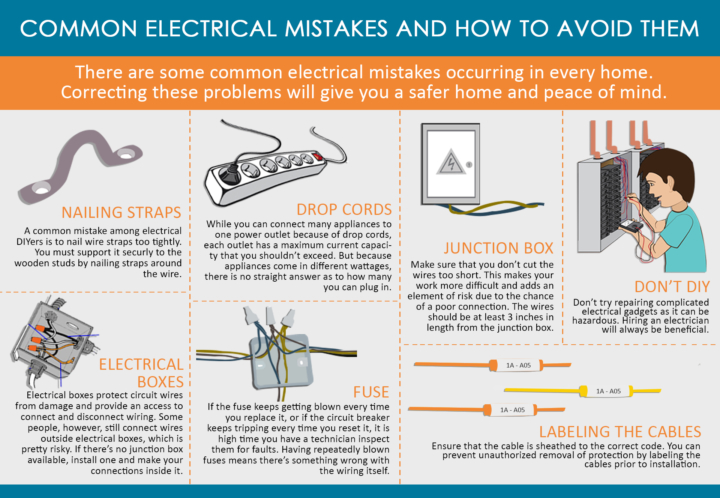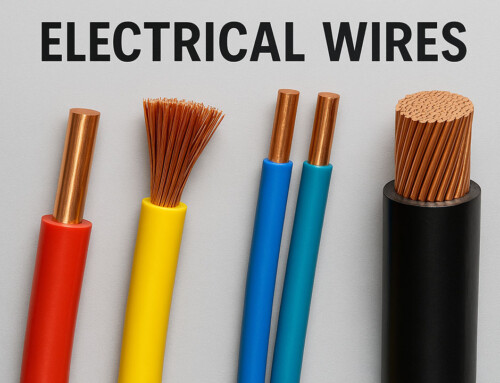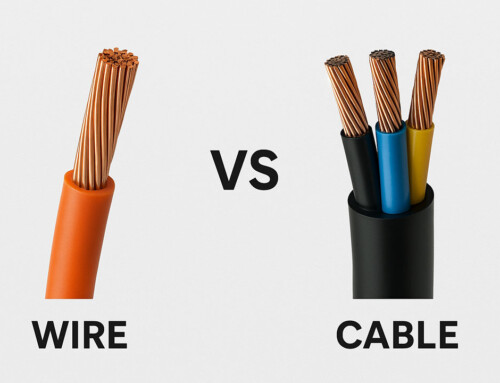Table of Contents
It is crucial to have proper electrical connections in your home, office or place of business since faults or failures in the system pose a serious risk in terms of electrocution, fire damage and short circuits.
Whether you’re working in the electrical industry or tackling a project on your own, or planning to move out of an office, there are some common mistakes with electrical set up at your new location, that need to be avoided at all costs. The consequences of improper wiring and electrical mistakes are not only inconvenient but possibly even catastrophic!
8 Electrical Mistakes to watch for, and solutions for fixing them
-
Wiring outside of Electrical Boxes
Connecting wires through an electrical junction box is essential for safeguarding them (as well as people and property).The main uses of electrical boxes include protecting wire connections against accidental damage and preventing electrical fire hazards by containing heat and sparks from loose connections or short circuits.
-
Using a “Too-Small” Electrical Box
If you’re not using the right-sized junction box, the wires inside it will be stuffed together and the box will be over-filled.When wiring is tightly crammed into a small space, the risk of overheating or short circuits is greater. This can be a potential fire hazard, which is why you should follow the minimum box sizes specified by the National Electrical Code.
-
Recessing Electrical Boxes behind Walls
When an electrical box is recessed behind a flammable wall surface like wood, it’s a potential fire hazard. By exposing combustible wall material, chances of stray sparks or heat igniting the surface are higher. Make sure the box is fitted flush with the wall surface instead, to minimize the threat of possible danger to life and property.
-
Wires Cut Too Short
If you cut the wiring too short, making proper connections becomes more difficult, and this poses a tremendous risk. Poor connections can cause short circuits, overheating and other electrical faults. It’s much safer to leave wires protruding about 3 inches or so from the box, which lets you easily move them around while making connections.
-
Exposed Plastic-Sheathed Cables
If you’re using plastic-covered cables, they need to be protected against damage from framing members.
Attach small boards next to vulnerable cables, especially if they run over or under ceiling and wall framing. Unprotected cables can be extremely dangerous, and the electrical code states that they should not be left open between framing. -
Unsecured Cables an Wires
When you’re installing wires and cables, secure them with a clamp to prevent damage and strained connections. Clamp selection depends on the type of electrical box you use: Built-in cable clamps are not required for single plastic boxes, but cables must be stapled within 8 inches of the box. Internal clamps are needed for larger plastic boxes, and you are required to staple cables within 12 inches of it. Use approved cable clamps for metal junction boxes, since wiring can be damaged by the sharp box edges.
-
Unsupported Switches and Outlets
Loosely connected or unsupported switches and outlets are a potential safety hazard, in addition to looking sloppy. They can move around or get pulled during use, damaging the connection between terminals and wires in them. As a result, the danger of overheating and arcing is higher, which can lead to short circuits and fires.
-
Three-Slot Outlets without Ground
If you use appliances with three-pronged plugs, you may think of replacing two-slot outlets with three-slot ones.You should only do this if your electrical box includes a ground wire (check using a tester). Install two-slot outlets if it doesn’t. While you’re at it, use these to replace any three-slot receptacles you find in ungrounded boxes too.
Are you working on a large project and looking for great prices on electrical supplies? D & F Liquidators has a huge selection for you. Contact us now and tell us what you need!






